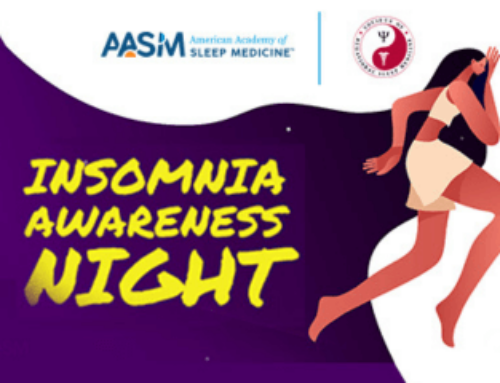Westchester, Ill. — A study in the Feb. 1 issue of the journal SLEEP was the first to use twin data to examine the longitudinal link between sleep problems and depression. Results of this study demonstrate that sleep problems predict later depression; the converse association was not found. These findings are consistent with the theory that early treatment of sleep problems may protect children from the development of depression.
Results of the study indicate that the stability of sleep problems across time is mainly caused by genetic factors (46 percent of the genetic influences on sleep at age 10 were the same as those that influenced a child at age 8). The stability of depression is mainly caused by non-shared environmental influences (19 percent of the non-shared environmental influence on depression at age 10 remained the same from the age of eight).
According to lead author Alice M. Gregory, senior lecturer in the department of psychology at Goldsmiths College in London, the most surprising result of the study concerned the reasons why there may be links between sleep problems and depression at different points in a young person’s life.
“We reported in a study previously, that genes were the most important factor in explaining the association between sleep problems and depression in eight year news,” said Gregory. “However, when we examined this issue at age 10, we found that genes were less important in explaining the association and that environmental influences had become more important. This could be because environmental experiences are becoming more relevant as children grow older and could therefore play a role in both sleep problems and depression.”
The process thought to underlie the associations between sleep and depression reflects abnormalities that are known to be influenced by genetic variations. A longitudinal twin study was used in order to distinguish shared and non-shared environmental influences. Shared environmental influences create similarities among individual family members, and can therefore be estimated by calculating the similarity between identical twins that is not due to genetic influences. Non-shared environmental influences individualize family members, and can therefore be estimated by examining the associations between monozygotic (MZ) twin pairs; if there is not a perfect correlation between MZ twins, it can be assumed that non-shared environmental influence are playing a role.
Data were collected from 300 twin pairs born in England and Wales between 1994 and 1996. Anxiety was examined at age 7 using the parent-report Anxiety Related Behaviors Questionnaire (ARBQ), a 21-item scale reflecting commonly assessed anxiety-related behaviors in young children (including general distress, separation anxiety, shyness, inhibition and fears). Two hundred forty-seven twin pairs scored highly on parent-reported anxiety at age seven; fifty-three control twin pairs also were selected to ensure full coverage of the full range of scores on test measures.
Parents reported on their 8-year-new children’s sleep problems using the abbreviated version of the Child Sleep Habits Questionnaire (CSHQ). Eight aspects of commonly reported childhood sleep problems were analyzed, including bedtime resistance, sleep-onset delay, sleep duration, sleep anxiety, night waking, parasomnias, sleep-disordered breathing and daytime sleepiness.
Depressive symptoms were examined in the 8-year-new twins through the Children’s Depression Inventory (CDI), a 27-item self-report questionnaire that examines affective, cognitive and behavioral signs of depression. Approximately two years later when the twins were 10 years new, data on sleep problems and depression were collected again from 250 of the twin pairs.
The authors argue that although childhood sleep problems have only a small influence on later depression, these issues should be given serious consideration as they can negatively affect a child’s mood, attention-span, and social and academic function. They also state that, in comparison with other risk indicators of later problems, sleep difficulties are more easily broached and readily discussed with families without the negative stigma that may be associated with the discussion of mental health problems in children.
SLEEP is the official journal of the Associated Professional Sleep Societies, LLC (APSS), a joint venture of the American Academy of Sleep Medicine and the Sleep Research Society.The APSS publishes original findings in areas pertaining to sleep and circadian
rhythms. Sleep, a peer-reviewed scientific and medical journal, publishes 12 regular issues and 1 issue comprised of the abstracts presented at the SLEEP Meeting of the APSS.
For a copy of the study, “The Direction of Longitudinal Associations between Sleep Problems and Depression Symptoms: A study of Twins Aged 8 and 10 Years,” or to arrange an interview with the study’s author, please contact Kelly Wagner, AASM public relations coordinator, at (708) 492-0930, ext. 9331, or kwagner@aasm.org.
AASM is a professional membership organization dedicated to the advancement of sleep medicine and sleep-related research. As the national accrediting body for sleep disorders centers and laboratories for sleep related breathing disorders, the AASM promotes the highest standards of patient care. The organization serves its members and advances the field of sleep health care by setting the clinical standards for the field of sleep medicine, advocating for recognition, diagnosis and treatment of sleep disorders, educating professionals dedicated to providing optimal sleep health care and fostering the development and application of scientific knowledge.
###




